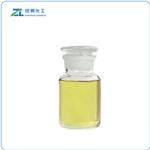Description
EPA is an ω-
3 fatty acid abundantly available in marine organisms. It is oxygenated by COX-
1 and COX-
2 at rates of about 5% and 30%, respectively, compared to arachidonic acid. EPA has been shown to offer protection against coronary heart disease, thrombosis, ischemic brain injury, scaly dermatitis, and some inflammatory diseases.
Chemical Properties
Colorless Oil
Uses
cis-5,8,11,14,17-Eicosapentaenoic acid has been used an analytical standard for the synthesis followed by investigation of pharmacological properties of aconitine-derived lipo-alkaloids.
Uses
cis-5,8,11,14,17-Eicosapentaenoic acid has been used:
- to test pharmacologic effect on steatosis in hepatocytes
- as an analytical standard in Raman spectra measurements to characterize human breast cancer samples
- in lipid peroxidation assay in mouse embryonic fibroblasts and in pre-treatment of cells for cell viability studies
Uses
Important polyunsaturated fatty acid of the marine food chain that serves as a precursor for the prostaglandin-3 and thromboxane-3 families. It differs from arachidonic acid (the eicosatetraenoic acid that is a precursor for the prostaglandin and thromboxane-2 families) by the extra double bond between the third and fourth carbons from the “methyl end” of the molecule. Antilipemic.
Definition
ChEBI: An icosapentaenoic acid having five cis-double bonds at positions 5, 8, 11, 14 and 17.
brand name
Decabid (Lilly).
General Description
Eicosapentaenoic acid (cis-5,8,11,14,17), also known as EPA, is a long-chain omega-3 fatty acid. Studies suggests that EPA as well as other fatty acids can serve as biomarkers for cardiovascular disease, and nutritional and metabolic disorders. This certified solution standard is suitable for use as starting material in the preparation of linearity standards, calibrators, or controls in mass spectrometry-based EPA testing applications such as assessment of cardiovascular?disease risk and fatty acid deficiency, and detection and quantification of EPA in nutraceuticals and dietary supplements.
Biochem/physiol Actions
5-Lipoxygenase inhibitor; reduces thromboxane A2 production.
References
1) Lee et al. (1985), Effect of dietary enrichment with eicosapentaenoic and docosahexaenoic acids on in vitro neutrophil and monocyte leukotriene generation and neutrophil function; N. Engl. J. Med., 312 1217
2) Nicholson et al. (2013), The role of marine n-3 fatty acids in improving cardiovascular health: a review; Food Funct., 4 357






